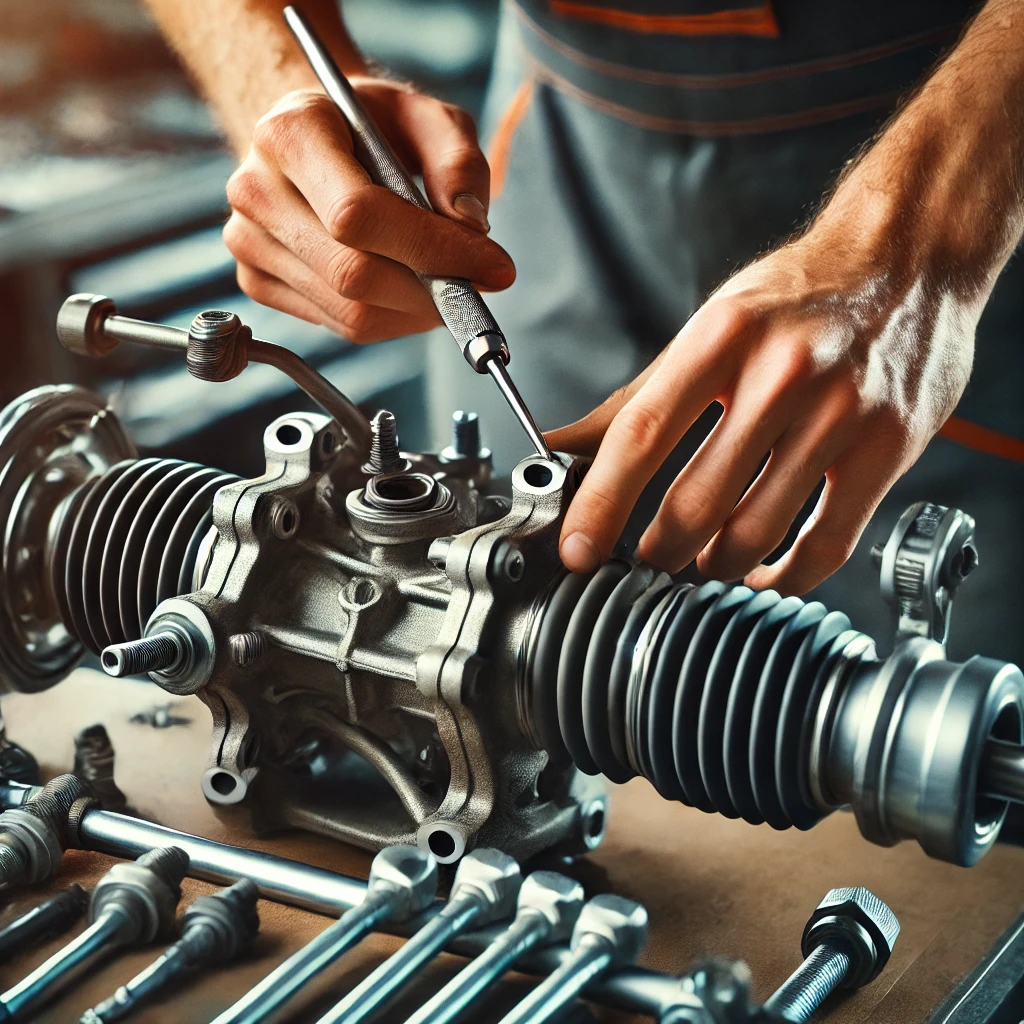Understanding the Importance of Steering Systems
The steering system is a crucial component of any vehicle, allowing the driver to control the car’s direction with precision. A well-functioning steering system ensures safety, stability, and an optimal driving experience. However, over time, various steering components wear out due to factors like road conditions, driving habits, and mechanical failures. When these issues arise, a steering replacement becomes necessary to restore vehicle performance and safety.
Signs That Indicate a Need for Steering Replacement
Steering issues can develop gradually, making it essential to recognize early warning signs before a complete failure occurs. Some key symptoms include:
- Difficulty Turning the Wheel: If your steering feels unusually stiff or heavy, it could indicate power steering failure or worn-out components.
- Vibrations or Shaking: A faulty steering rack or tie rods can cause the steering wheel to vibrate, making driving unstable.
- Unresponsive or Loose Steering: If your steering feels delayed or overly loose, the problem may lie in the steering column, rack, or worn-out bushings.
- Power Steering Fluid Leaks: Leaking fluid under the vehicle, particularly near the front axle, suggests a problem with the power steering pump, hoses, or rack.
- Strange Noises While Turning: Squeaking, whining, or grinding noises often indicate a failing power steering system or dry components.
If you notice any of these symptoms, it’s essential to have the steering system inspected and replaced if necessary.
Types of Steering Systems and Their Replacement Methods
Most modern vehicles use one of the following steering systems:
- Hydraulic Power Steering (HPS) – Uses hydraulic fluid and a pump to assist steering.
- Electric Power Steering (EPS) – Uses an electric motor instead of hydraulic fluid, requiring less maintenance.
- Manual Steering – Found in older vehicles, relying entirely on mechanical linkages.
Each system requires a different approach to replacement, with EPS being more electronic-focused, while HPS relies on hydraulic components.
Step-by-Step Steering Replacement Process
Replacing the steering system is a complex task best performed by professionals. However, for those with advanced mechanical knowledge, the following is an overview of the replacement process:
Step 1: Preparation and Safety Measures
- Park the vehicle on a flat surface and engage the handbrake.
- Disconnect the battery to prevent electrical mishaps.
- Lift the car using jack stands to access the steering components.
Step 2: Removing the Old Steering Rack or Column
- Drain the power steering fluid (for hydraulic systems).
- Disconnect the tie rods and steering shaft.
- Remove the mounting bolts securing the steering rack or column.
- Carefully detach the old unit, ensuring no components are damaged.
Step 3: Installing the New Steering Assembly
- Position the new steering rack or column correctly.
- Secure it with mounting bolts and reconnect the tie rods.
- Reattach hydraulic lines or electrical connections for power-assisted systems.
Step 4: Refilling Fluids and Recalibrating the System
- Refill power steering fluid if necessary.
- Bleed the system to remove air bubbles.
- If replacing an EPS system, recalibrate using diagnostic tools.
Step 5: Testing and Alignment
- Lower the car and reconnect the battery.
- Test the steering by turning it lock to lock.
- Perform a wheel alignment to ensure straight tracking.
Cost of Steering Replacement
The cost of replacing a steering system varies based on factors such as vehicle make, model, and labor charges. On average:
- Power Steering Rack Replacement: £400 – £1,200
- Electric Power Steering Module Replacement: £300 – £800
- Tie Rod Replacement: £100 – £300
- Steering Column Replacement: £400 – £1,000
Preventative Maintenance Tips for Longevity
- Regular Fluid Checks: Ensure power steering fluid is clean and topped up.
- Avoid Hitting Potholes and Curbs: Sudden impacts can damage tie rods and rack components.
- Schedule Routine Inspections: A professional mechanic can detect minor issues before they escalate.
- Keep the System Lubricated: Dry or worn-out joints can accelerate wear.
Conclusion
Steering replacement is a critical procedure that ensures vehicle safety and handling performance. Whether you are dealing with hydraulic, electric, or manual steering, recognizing early signs of failure and addressing them promptly can prevent costly repairs and accidents. Always consult a qualified mechanic for professional installation and routine maintenance.

